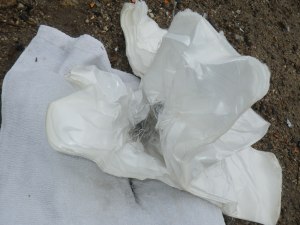Modern armor leans rather heavily on a class of materials known as ceramics. Man has been developing and using ceramics since antiquity, and they still play a vital role (some would say even more so now) in the 21st century.
But instead of amphorae to hold wine, olive oil, or other bulk trade goods, ceramics are used in more demanding applications, where extreme heat, pressure, abrasion, and corrosion resistance are critical.
For applications in body armor, ceramics must exhibit several seemingly contradictory attributes, of which four are absolutely critical. They are:
Bulk Density: This translates into how heavy a ceramic is for a given volume. The lower the number, the better.
Hardness: This is a ceramic’s resistance to indentation. Harder is better, especially when facing tungsten carbide core threat projectiles.
Fracture Toughness: How resistant to crack formation and propagation a ceramic is. The higher the number, the more suitable as armor.
Modulus of Elasticity (Also known as Young’s Modulus): This describes how stiff a material is (elastic deformation). The higher the number, the stiffer it is.
There is also another vital attribute to consider, which is cost. There are several ceramics that would be considered “ideal,” but are disqualified due to prohibitive cost. I have provided the attributes below, as well as a numerical rating from 1 to 3 (1 being least efficient, 3 being most efficient). Below a usable threshold will result in a 0. This will allow us to see how each ceramic stacks up.
The three primary technical ceramics that account for 95% of the ceramic armor currently used (personnel and vehicular) are:
Aluminum Oxide (AKA Alumina, Al2O3)
Silicon Carbide (AKA Carborundum, SiC)
Boron Carbide (AKA Black Diamond, B4C)
The traits and attributes are as follows:
Al2O3-
Bulk Density (99.5% grade): 3.90 g/cm3 (1, heavy)
Hardness: ~1400-2000 Knoop (Kg/mm2) (2, low-medium hardness)
Fracture toughness: 4.5 (2.5, very good)
Elastic Modulus: 393 (1.5, low)
Cost: $ (affordable)
Overall rating: 1.9 out of 3
SiC-
Bulk Density (Sintered): 3.21 g/cm3 (2.5, medium weight)
Hardness: 2800 Knoop (Kg/mm2) (2.5 high hardness)
Fracture Toughness: 4 (2, good)
Elastic Modulus: 475 (2.5 medium-high)
Cost: $$ (expensive)
Overall rating: 2.3 out of 3
B4C-
Bulk Density (Hot Pressed): 2.51 g/cm3 (3,extremely light)
Hardness: 3500 Knoop (Kg/mm2) (3,extremely hard)
Fracture Toughness: 2.6 (1,low)*
Elastic Modulus: 675 (3,extremely high)
Cost: $$$ (extremely expensive)
Overall rating: 2.2 out of 3
So, as can be seen, there are numerous factors involved. While Boron Carbide is the hardest of the commonly used ballistic ceramics, it is not the best overall. Silicon Carbide takes the honors, having the best combination of factors. If weight is paramount, B4C is the leader.
By comparison, the following are the attributes for Silicon Nitride, an “ideal” ceramic for ballistic applications:
SiN-
Bulk Density: 3.31 g/cm3 (2.3, medium heavy)
Hardness: 2200 Knoop (Kg/mm2) (2.3, medium hardness)
Fracture Toughness: 7 (3, extremely high)
Elastic Modulus: 317 (1.5, low)
Cost: $$$$ (prohibitively expensive)
Overall rating: 1.82
And the attributes for fused silica (SiO2, glass)-
Bulk Density: 2.2gm/cm3 (3, very light)
Hardness: 600 Knoop (Kg/mm2) (0, below usable threshold)
Fracture Toughness: 1 (0, below usable threshold)
Elastic Modulus: 73 (0, below usable threshold)
Cost: $ (very inexpensive)
Overall rating: 1.2
So, as can be seen, multiple factors are in play when selecting optimal ceramics for ballistic use. Looking at just one, or even two will not give a complete picture.
Which is why most ceramic armor for rifle and larger caliber applications is either Alumina (most effective ceramic for the money), or Silicon Carbide (best performer for the money).
And until revolutionary advances are made in the field of nanotechnology and technical ceramics, the three main materials listed above will be soldiering on for the forseeable future.
*Special note about Boron Carbide- B4C undergoes what is known as “amorphization” under impact loading. In layman’s terms, the crystalline structure of the Boron Carbide is converted to a glassy (amorphous) structure when impacted at high speed. This causes a tremendous loss of strength. The reasons for this impact-loading loss of strength is still not fully understood, and ongoing research is attempting to remedy it. Neither Al2O3 nor SiC undergoes this transition.













